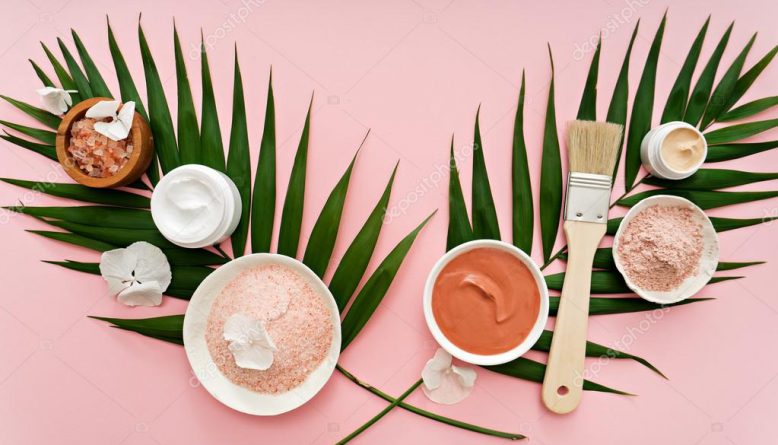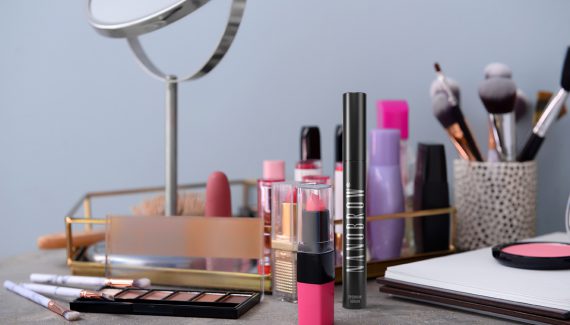Why most cosmetics’ list of ingredients is written in Latin? How to read the information put on the label? Is water included in the cosmetics good or bad? And finally, which cosmetics and with what substances should we avoid? Today I’m going to answer these and other similar questions to make shopping easier for you.
Everything you should know about cosmetic composition:
- International Nomenclature of Cosmetic Ingredients (INCI) has been introduced fairly recently. It’s considered as a huge convenience because all the ingredients are written either in Latin or they carry an universal name. Thanks to this, we won’t come across a situation when we don’t know a particular ingredient’s action. Simply, if you spot a new cosmetic substance you haven’t heard about yet, you can just look the very name up in the Cosmetic Ingredient Dictionary (yes, this kind of dictionaries are available!). Name universalisation of active substances is, in my opinion, a huge step forward and a big facilitation for consumers.
- I’m curious if you know that the order in which the ingredients are arranged isn’t accidental. The priority is determined by the percentage a particular substance comprises a certain product of. What does it mean? To clarify, the more of a substance is used, the higher it is placed on the list of ingredients. For that reason, it’s not wise to buy, for example, hair oils where Argania Spinosa Kernel Oil (argan oil) is placed as one of the last. In other words, the amount of the oil will be just scarce despite the big inscription placed on the front label saying “with Argan Oil”.
- It’s suggested looking at the very beginning and end of the list of ingredients. Why? The base ingredient is placed as the first one (in a high-quality cosmetics water is replaced with herbal distillates and vegetable extracts), and at the end you may find substances that are potentially responsible for triggering allergies (there are 26 of them). Please, don’t get me wrong, these aren’t only synthetic substances since the list include, for example, substances deriving form essential oils, too. Researches proven that this set of 26 substances pose a higher risk of irritations and they have to be enumerated on the label if their concentration is higher than 0,01%.
INGREDIENTS USED IN COSMETICS YOU SHOULD STAY AWAY FROM:
In average, a shampoo, cream or make-up remover is composed of a few substances. These are various kinds of compounds that undertake a defined mission when put it this particular configuration. Sometimes, it’s worth taking a closer look at the list of ingredients because, among the vitamins and a few precious vegetable oils, you may find substances which are recognized as potentially damaging. Here are the most popular ones:
- SLS – a detergent responsible for creating this pleasant lather we know so well. However, it’s a pity that this substance may irritate and dehydrate skin because it removes protective lipid barrier of epidermis. Just as a reminder, this layer of our dermis is a natural screen that protects skin from losing water.
- SLES – a slightly less damaging version of the above-mentioned substance which is created as a result of chemical reaction of the very molecules of the detergent. It can irritate and dehydrate as well.
- MINERAL OIL – a liquid blend obtained due to petroleum processing, and this is, for example, petroleum jelly or cosmetic paraffin. It doesn’t penetrate skin, therefore, mineral oil can remain on skin’s surface impeding gas exchange and negatively influencing metabolism. Also, mineral oil is considered as an comedogenic ingredient which, in plain English, means that it clogs skin pores.
- PEG / PPG – polyethylene glycol or polypropylene glycol which both are artificial compounds responsible for a cosmetic’s consistency. They contribute to weakening the protective lipid barrier of skin and are considered as potentially cancerogenic substances.
- EDTA – a chemical compound that extends lifespan of a cosmetic. It’s advised to avoid this ingredient because it can cause allergies, cough and catarrhal conjunctivitis.
- FORMALDEHYDE – also known as methanal, which may constitute even up to 5% of finger nail hardening products, whereas in remaining cosmetics it can’t exceed 0.2% of the entire product’s content. Why? It’s due to the fumes which frequently cause rash, allergies and inflammations of skin. When used in fingernail products, it can even lead to separating the layers of a finger nail plate.
- ALUMINIUM – this substance is most frequently met in deodorants. It’s worth choosing these which don’t contain aluminium because they can clog skin pores, cumulate in skin and irritate.
- PARABENS – preservatives which absence in cosmetics is a reason for the producers to boast about. Which, in fact, is reasonable because parabens are one of the most popular allergens which make skin sensitive to action delivered by external factors.
- SILICONES – substances responsible for smoothing and protection. In reality, they don’t contain any nourishing features. Actually, all that they can do is improving appearance of hair or skin, yet only temporarily. Some types of silicones are really hard to remove and when they cumulate and linger either on skin or hair they can irritate or clog.
- PHTHALATES – substances banned from being used in cosmetics designed for babies, yet frequently added to, for example, hair sprays, nail polishes, fragrances or balms. They can cause ailments because they penetrate through an organism fast.
- BHA / BHT – synesthetic anti-oxidants which are easy (advisable) to be replaced with natural anti-oxidants. It’s believed that these synthetic substances can have cancerogenic action, irritate and even disturb hormone secretion.
Which ingredients should you look for while buying a beauty product?
Although the list of these intrusive substances is very long, the list of safe ingredients is way longer, believe me. I’m a supporter of taking care of my body due to natural oils therefore, whenever I can, I take advantage of this gifts of Mother Nature. They replace my hair conditioners, face creams, make-up removing lotions, cuticle butters and many other beauty products. However, I understand that not everyone can use oils. The solution? Those of you who are, for example, allergic to natural oils may give a go to natural and eco-cosmetics. Anyway, once choosing this kind of a product, follow the list of ingredients instead of paying attention to what is included on the front label. Last but not least, an issue which is pretty obvious but many of us somehow don’t recognize its simplicity, and this happens fairly frequently. Namely, only homemade cosmetics provide you with certainty when it comes to the composition. You can make your own beauty products which don’t contain oil as their base ingredient. Instead, they may include, for example, honey or yoghurt.




Leave a Reply